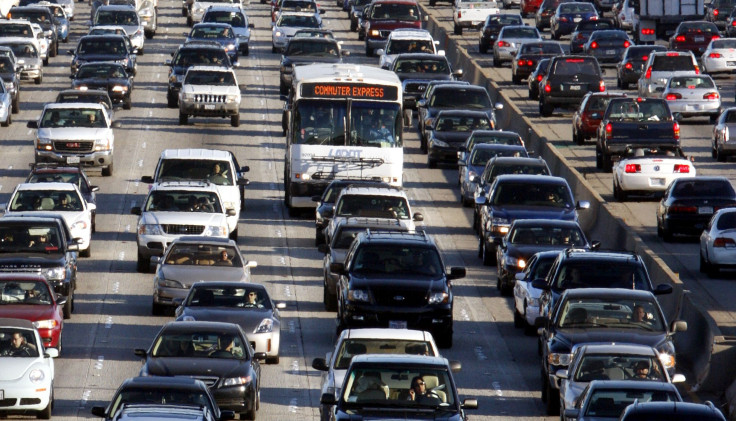Commuting In America's 30 Biggest Cities: US Workers Still Dependent On Cars To Get To Work [CHARTS]

American workers remain heavily dependent on their cars to get to work, reflecting a dearth of public transportation in most cities and decades of investments in sprawling suburban infrastructure. Nearly 86 percent of the U.S. workforce drives alone or in a carpool each morning and evening, particularly in cities beyond the East Coast where highways and tunnels trump subways and trains.
A survey of U.S. census data released Wednesday shows just how dramatically our methods of commuting shift from city to city. Michael Sivak of the University of Michigan’s Transportation Research Institute combed through numbers from the 30 largest U.S. cities to learn how and when workers 16 years old and higher commute to their jobs.
He found commuters had nearly universal access to cars in cities such as Fort Worth, Texas, and San Jose, California, where only 1.8 percent of workers didn't have a car to drive to work. In New York and Washington, D.C., by contrast, about 46 percent and 28 percent of workers, respectively, had no vehicle available. Car-centric commutes also tended to be shorter, with trip times lasting about 21 minutes on average in Oklahoma City, compared to 40 minutes in subway-dominated New York.
Our commuting options determine more than just how long we spend in transit or how much cash we spend on gas, tolls and subway cards. Transportation is also a critical factor in our ability to access jobs, yet more jobs are moving out of cities and into the suburbs. In the nation's largest 100 metropolitan areas, the number of jobs within the typical commute distance fell by 7 percent from 2000 to 2012 as employment "suburbanized," researchers with the Brookings Institution's Metropolitan Policy Program found in a March report.
"We're seeing in general a growing distance between people and the work they're trying to reach, which obviously has huge implications ... for how people are able to reach more and better jobs, particularly post economic recovery," said Joseph Kane, an infrastructure researcher with Brookings metropolitan program.
At the same time, he noted, transportation alternatives are growing slightly in major metropolitan areas, making it easier for some workers to access urban jobs, according to a separate Brookings study. About 0.3 percent more commuters used public transportation in 2013, compared to 2007, while 0.1 percent more people walked or biked to work. "The broad majority of people are still driving to work, but we see growing preferences, particularly among millennials, toward these alternate modes of transportation," Kane said.
In the Michigan study Wednesday, Sivak looked at the five main ways Americans commute to work. Nationwide, 76.4 percent of all U.S. workers drive alone in their cars or trucks, while another 9.4 percent commute via carpool. About 5.2 percent of workers use public transportation, with 2.8 percent opting to bike and just 0.6 percent choosing to walk. Another 4.4 percent of workers had no commute at all: they work from home.
© Copyright IBTimes 2024. All rights reserved.




















